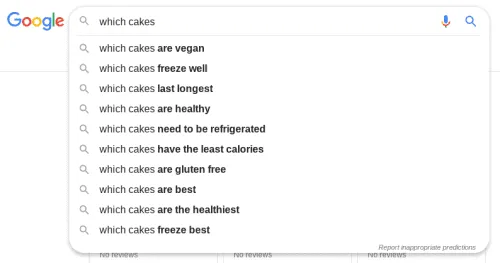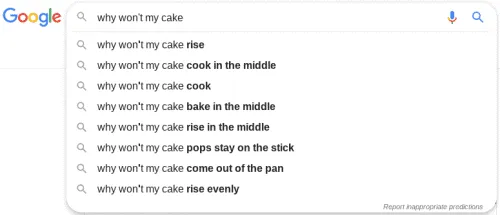Want to make your blog more engaging?
Not sure how?
Then get comfy; it’s gonna be a long one.
If you’re new to blogging or find it difficult to get people to read your stuff and want to drive traffic to your website and blog, this post is for you.
7 tips for how to make your blog more engaging
You’ve probably been told how blogging helps your business grow (probably by me in my post 5 Reasons Why Blogging Is Important for a start).
But starting a blog and writing any old thing is no good. When you first start, you’re unlikely to be a leading voice in your industry. Building up to that takes time, so follow these seven tips and you’ll be on your way.
One. Blog like nobody’s reading – because they probably aren’t
The first thing you need to do to get customers reading your blog posts is to start writing them.
Pretty obvious, I know, but if you’re not blogging, how will people read your stuff?
In the beginning, getting thousands of readers is rock hard – but don’t be downhearted.
The fact is, if you’re new to it, people won’t know you, so they’ll go to someone they trust.
And what do I mean by that?
Well, let’s say you’re a cake designer, and you write a blog post called: 10 Eye-popping Ways To Decorate A Cake
However, Mary Berry posts something similar on her website, and both posts are posted on a public forum.
Which will be more popular?
Chances are, yours won’t get as many views because she’s Mary Berry and you’re not.
However, by posting regularly with helpful stuff your target audience wants and needs, you’ll:
- Build trust in your business
- Win customers
- Create a dedicated readership who’ll turn to you for the advice they need to solve their problems
Watch your back, Mary!
Two. Ask yourself what they want
In point one, I said you should be posting regularly with helpful stuff your target audience wants and needs.
So, you sit down at your laptop and… nothing.
Making you ask:
“What the bloody hell does my audience need?”
Rather than confusing things, I’m gonna stick with you being a cake designer. Your customers have questions. So, what could they be thinking?
How about:
- Is icing a cake difficult?
- Which cakes have the least calories?
- What do I need to bake a cake?
They’ve got questions, so answer them in your blog post titles:
- Here’s how easy it is to ice a cake
- 7 low-calorie cakes that are a treat for the tastebuds
- 10 things you’ll need to make cake baking easy
These engaging, confident titles sound like you know what you’re talking about
. Plus, people love to click on ‘How to‘ and ‘List‘ posts; doing this is one of the best ways to increase blog engagement.
Three. Find out what your customers are asking
Okay, so you’ve come up with some questions of your own (as per point two), meaning you can probably knock out a few posts with stuff you’re absolutely sure your customers need answering.
But how do you find out what they’re actually searching for online without dropping through their skylight on wires, à la Tom Cruise in Mission: Impossible, to listen in on their conversations?
Thankfully, there are easier ways to find out – here are two of them:
A) Google
You’ve used Google, so you’ll have noticed when you’re typing, it has an ‘auto-complete‘ function.
This function is based on what others have searched for, which makes it the perfect way to find the most popular questions your customers are asking.
So, sticking with the cake theme, I started typing:
Straight away, we have questions covering a range of potential customers:
- Which cakes are vegan
- Which cakes are healthy
- Which cakes are gluten-free
Or for those struggling with their baking:
All you’ve gotta do is start typing and you’ll be presented with loads of questions you can answer to show your expertise.
B) Try SE Ranking
Instead, take out a 14-day free trial with SE Ranking and use it to research loads of different keyphrases, words and questions.
You’ll discover the search volume for each query, so you can spot low-hanging fruit phrases that’ll help you rank pretty easily and quickly.
Four. Research your competitors – and do things better
Getting started is the exciting part, but what if one of your competitors is doing it better?
The answer?
Research what they’re doing – then do it better.
Take one of the questions you’ve decided upon, type it into Google (other search engines are available) and see if there are similar blog posts. Click on them, have a read and make notes on style and substance, including:
- How thorough is the article?
- Have they missed anything out?
- Is it easy to read, have they used short sentences and bullet points or is it huge paragraphs of text?
- Have they used eye-catching images?
- Are there headers and subheaders – and do they relate to the subject matter?
- Is it well researched?
Your aim is to make customers read your blog posts, so you need to write better articles than your main competitors – so make sure the articles you view are on the first page of Google (ain’t no-one going to page two when they need answers).
Going deep is one of the best ways to make your blog way better than others in your industry.
Five. Make you blog posts easy to read
People want answers fast, so don’t bog down your blog posts with long-winded, 500-word paragraphs.
You can make your posts easy to read by:
A) Keeping sentences short
Like this one.
Sure, there’s still room for longer sentences, you don’t want to come across as cold and distant. And there’s no harm in a longer paragraph either, here or there. However, you don’t want to end up with a page made up of twenty of the bleeders, all extremely long with nothing to break up the monotonous drone of words.
You’ll notice lots of short and medium-length sentences and paragraphs in this blog post, but not one that rambles on for ages.
Read more about how to write short sentences to make your blog more engaging in my post, 7 Ways To Master Short Copy.
B) Using bullet points
Unlike one client who told me bullet points were unprofessional – I can tell you they’re not.
They’re the perfect way to:
- Make a list of ingredients, products and vital information stand out
- Create white space on your page
- Make it easier for your customers to read
Never think bullet points don’t have their place, they bloody well do.
C) Using headers and subheaders
Headers and subheaders break up your blog posts into manageable chunks. And they should tell the reader what that section is about, like:
Subheader: Why lemons are an essential cake ingredient
Subheader: How many lemons you’ll need when baking a lemon drizzle
Whatever header you use, make sure the content in that section matches the header.
D) Writing like you talk
Another that’s been a bone of contention with clients is that a chatty tone of voice really will appeal to your audience. I’m not saying you should do it everywhere, it may not suit your industry or business, but a blog is somewhere where you can be a little less uptight and a little more informal.
Reading this post, you’ll notice my tone of voice is laid-back
. I use words I use when you talk to me over the phone or on a Zoom call.
You’ll probably feel I’m not 100% grammatically correct either – but it doesn’t matter in a chatty blog post like this.
It’s possible to be chatty and professional.
Your readers have problems, so be warm, helpful and let them know you once caught your privates on the crossbar of your bike when you were eight – inspiring you to what you do now, selling jockstrap guards to protect genitalia from BMX crossbar hell.
Be yourself. It’ll make customers read your blog posts time and time again. For more information on writing in a conversational tone of voice, read my post Write Like You Talk. Nuff Said.
E) Using eye-catching images
I break up my posts with images.
I try and make it fun for the reader so they don’t become word-weary.
For free-to-use images, try:
- Unsplash
- Pexels
- Pixabay
And start making your posts a little more visually pleasing.
F) Creating loads of ‘How to’ and ‘List’ posts
People love ‘How to‘ and ‘List‘ posts.
Mix up what you call your posts, but throw a fair chunk of ‘How to‘ and ‘List‘ posts in.
Six. Optimise your blog posts for SEO
Google loves quality content, but it needs to know what the hell you’re talking about. By researching the questions people are asking, you’ll already have an SEO keyword or key phrase.
Make sure you use the keyword in the title, but you also need to sprinkle it throughout your:
- Blog post content
- Headers
- Image Alt+Txt
- Meta Data
It helps Google understand what your article is about. Use variations of the keywords, too. It’ll help you rank higher on search engines and get more people reading your blog posts. If this sounds mind-boggling, don’t worry.
To understand it better, read my post 24 awesome ways to optimise SEO for blog posts.
Seven. Share your blog posts
You’ve researched, written and optimised your blog posts.
Hurrah, job done.
Not quite.
Now you need to get some eyes on them, so share them on social media.
Understand your target audience and get more eyes on your blog posts
By following these tips, you’ll make your blog more engaging, setting you well on your way to becoming a voice of authority in your industry.
It won’t happen overnight, but by posting helpful stuff your customers need answering, you’ll start picking up a readership who’ll hopefully turn into paying customers.
If this seems like a whole load of hassle you don’t have time for, check out my Services page and get in touch to see how I can write words that’ll get customers reading your blog posts.
Until next time,
Matt
Article updated 15th November 2024





